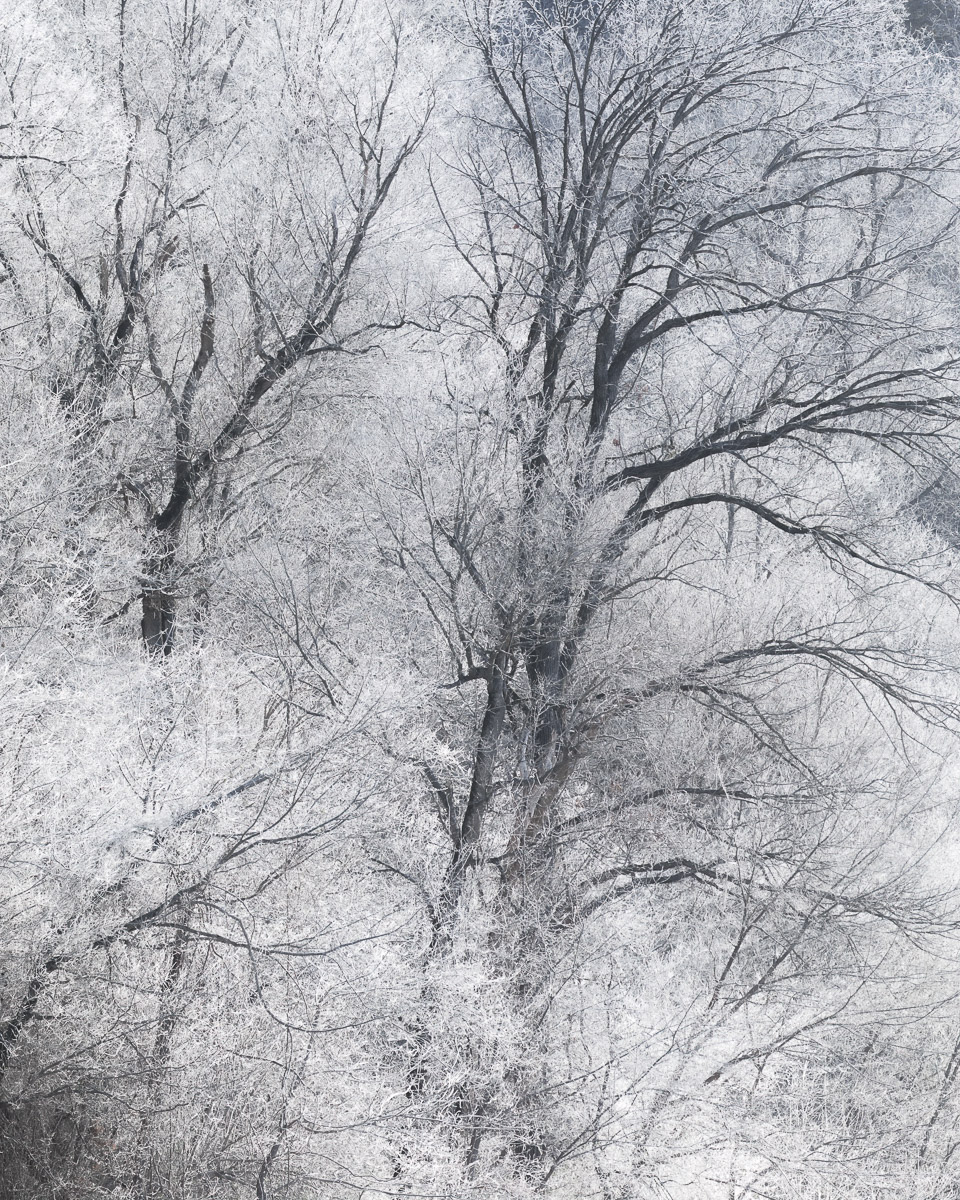My next and final stop on my recent Buffalo River trip was the portion of the river just below the Tyler Bend campground area. By this time, it was nearly two hours after sunrise, so the sun was getting fairly high and creating rather harsh lighting conditions. But, I was confident I could find a nice composition despite the challenging light, especially if I kept an open mind.
I walked down to the river to find that it was actually pretty high, which prevented me from walking along the river bank as I had expected to do. I stood there for a few minutes deciding what to do. I wasn’t ready to call it a day just yet, so I decided to go back to my truck and come up with a new plan.
As I turned around, something caught my eye. It was a group of trees a couple of hundred yards down the river on the opposite bank. They appeared to be covered in ice and appeared to be glistening as the sunlight shined down on them. Looking at those trees was like looking at a winter wonderland. There was no way I could let this opportunity go unphotographed.
But, I wasn’t in the best position to get a good image. I needed to make my way along the river bank to get closer to the trees, which meant scrambling over large rocks and a very narrow path while all the while avoiding stepping in any water. I was also racing time, or felt that I was, because the trees were in direct sunlight, and I was worried the thin layer of ice on the tree branches would melt away quickly.
I finally reached a small sandy patch where I could set my gear up without fear of it falling in the river. I was still a fair distance from the trees, so I grabbed my 100-400mm lens and a 1.4x teleconverter and attached them to my camera. I decided to use the teleconverter just in case I needed a little extra reach in order to frame the scene the way I wanted; in hindsight, the teleconverter really wasn’t necessary.
I always carry a polarizing filter with me to cut down any glare off of water, leaves, or other reflective surfaces, but I rarely use it. I should probably use it more often than I do, but I tend to forget about it until it’s too late. Fortunately, I remembered this time. The trees were in bright, direct sunlight, and the ice was reflecting a great deal of light; the polarizer reduced the distracting glare and light that was being reflected.
With everything set up, I framed the scene, pressed the shutter button, and captured this shot.
Processing the image, I didn’t feel the warm yellow color tones captured by the camera sensor lent themselves to the picture I had in mind, so I reduced the color temperature slightly to create a cooler-toned photograph. I made several contrast adjustments to separate the tree trunks from the ice-covered branches, and reduced the texture and clarity to create a softer look. Finally, I reduced the luminance and saturation of the blue and yellow tones, which created a more monotone image that I thought better reflected a cold winter scene.
After I captured the shot, I stood in that spot for a few more minutes to see if there was anything else that caught my attention. Not seeing any other compositions, I went back to my truck, loaded my gear, and got ready to head home. But, first, a quick check of the temperature. When I first arrived that morning an hour before sunrise, the temperature was a balmy seven degrees. By the time I packed it in and headed home, the temperature had nearly doubled to a sweltering 13 degrees.
But, it was definitely worth it.
